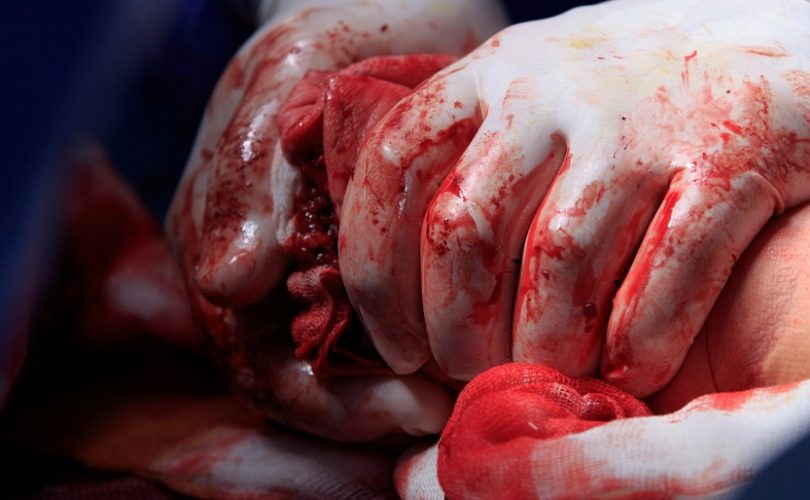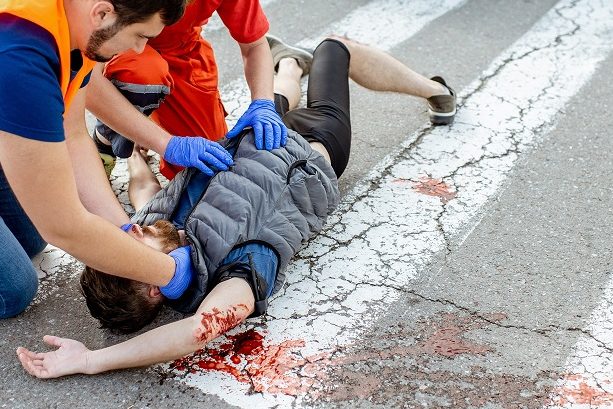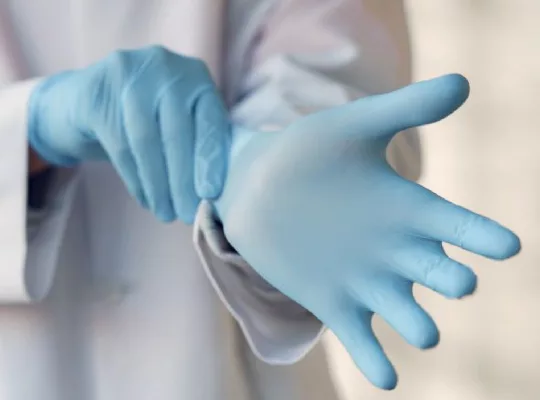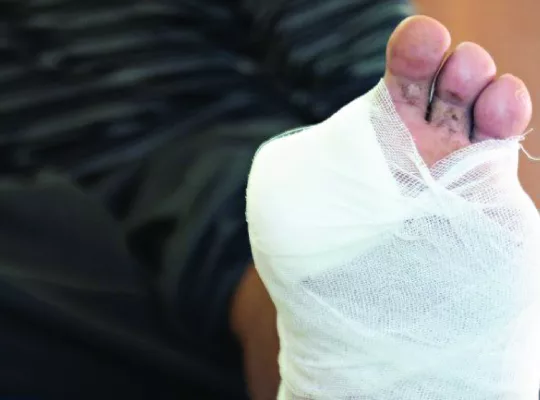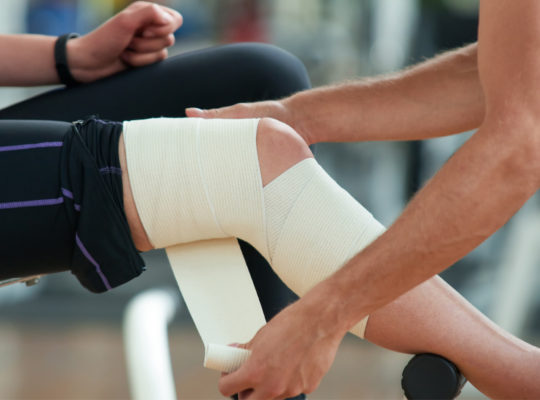What Should You do First?
If you or someone around you is severely bleeding, the first thing you should do is call 911 and make sure the area is safe. Check if an attacker is still around, or all machinery is shut off. The last thing this situation needs is two injuries.
Next, if there is a first aid kit on hand follow these steps:
- Put on nitrile or latex gloves. Infection is a serious risk for all parties when blood is present.
- Get the injured person on a stable surface while moving them as little as possible.
- Identify where the wound is.
- Assess the injury type.
- Is it a dismemberment or is major artery severed? If so, apply a tourniquet according to the directions to stem the bleeding. If need be, have a second person apply pressure and a combine pad or other item to absorb the blood.
- Is it a stab wound? If so, use a combine pad or other dressing and apply pressure to the wound, keep pressure on the wound until help arrives. A tourniquet, or packing the wound with gauze may also be necessary depending on location and shape/size.
- Is it a gunshot wound? If so, use a combine pad or other dressing and apply pressure to the wound. Depending on the size, a tampon or gauze can be inserted into the wound in addition to the gauze being used to apply pressure to the wound.
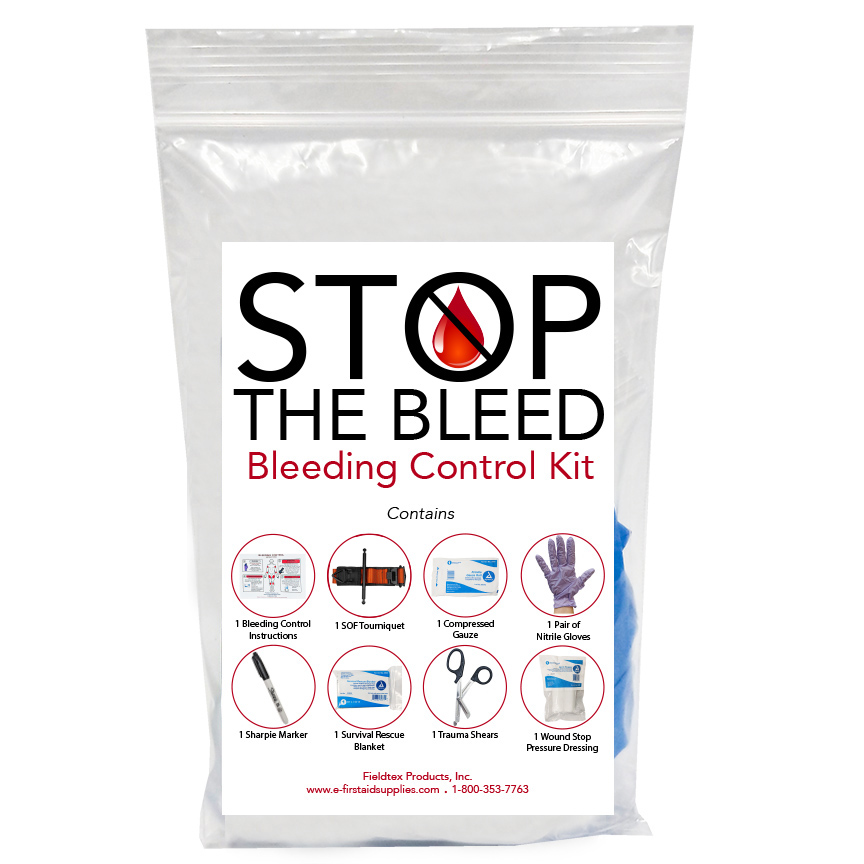
For a kit that has all the supplies listed above, check out our StopTheBleed Kit
Tourniquets can and should be used for gunshot and stab wounds on limbs.
How to Apply a Tourniquet
- Cut or remove any clothing on the limb.
- Place the tourniquet 2-3 inches above the wound, and/or above the knee or elbow.
- Fasten and tighten the tourniquet by hand.
- Tighten the tourniquet with the windlass (if it has one) until the bleeding stops.
- This is going to cause a lot of pain to the injured person. If they are conscious, tell them what is going to happen.
- If the tourniquet does not stop the bleeding, apply a second one 2-3 inches above the first.
Should You Improvise?
If there is not a med kit around improvising can be helpful. Use a plastic bag or two as substitute for gloves. A clean cloth, clothing, or towel can be used if gauze is not available. Improvising a tourniquet is not recommended, and if a commercial tourniquet is not available just apply pressure to the wound as best you can. Depending on the wound’s location, there are several places you can apply pressure to slow down the bleeding. If this doesn’t work, you can use stop blood spray for it.
Should You Swap the Gauze?
No, if you are applying pressure to the wound and the gauze absorbs as much blood as it can take, add a second one on top of it. Swapping gauze will stop you from applying pressure and will remove blood that is close to drying and may help stem the bleeding. You can replace the second gauze if it also becomes saturated.
What if You’re Alone?
The best thing to do when treating yourself is to call 911 on speaker phone. Giving the operator as much information as possible helps get emergency services to you faster. If you do not have a tourniquet available, certain pressure points can be compressed by yourself. Putting something like a rolling pin under your armpit and squeezing can compress the axillary and upper brachial pressure points and slow bleeding to arm wounds. For leg wounds, the femoral artery is relatively easy to apply pressure to by yourself.
What if the Person Goes into Shock?
Severe bleeding has a high likelihood of causing shock. The most important thing is to slow the bleeding as much as possible. Then, elevate the person’s legs if they have not suffered a spine injury or is able to move their leg without too much pain. In the case of a leg injury, keep pressure on the wound even while it is elevated. You can use the Bandage compresses to stop the bleeding. Even if the person claims to be thirsty, do not give them any fluids. Use guided breathing and reassure the person to try and control their heartrate while you wait for help to arrive.
Overview
In cases of severe bleeding, the most important things to remember are to apply pressure to the wound and try and keep the person awake and calm. Pressure helps slow blood flow, which will buy the person more time until help arrives. Keeping them calm and awake helps regulate their heartrate, controlling blood flow and preventing cardiac arrest.

